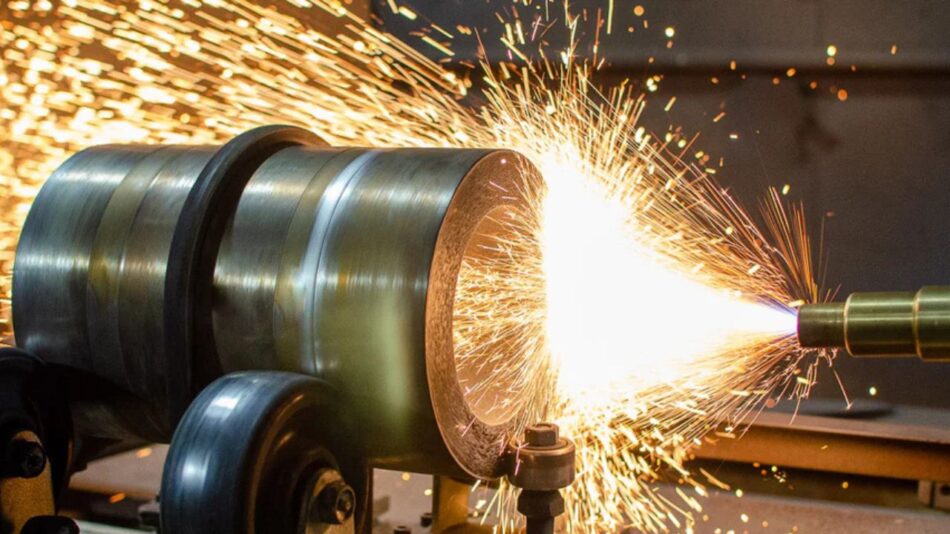The global thermal spray coatings market share reached a value of approximately USD 11.85 Billion in 2024. The market is projected to grow at a CAGR of 5.10% between 2025 and 2034, reaching a value of around USD 19.49 Billion by 2034. This steady expansion highlights the increasing demand for advanced surface protection technologies across industries such as aerospace, automotive, energy, and healthcare. With applications spanning from wear resistance to thermal insulation, thermal spray coatings have become indispensable in enhancing the lifespan, efficiency, and safety of critical components.
Introduction to Thermal Spray Coatings
Thermal spray coatings are specialized protective layers applied to the surfaces of materials to improve resistance against wear, corrosion, heat, and chemical damage. These coatings are produced by melting or softening materials—such as metals, ceramics, or composites—and then spraying them onto a target surface. The result is a durable, high-performance barrier that extends the operational life of industrial components.
Over the last few decades, industries have adopted thermal spray coatings due to their ability to withstand extreme operating conditions. They are particularly valuable in sectors where machinery and components are exposed to friction, heat, and corrosive environments.
Market Drivers
Several factors are contributing to the robust growth of the thermal spray coatings market:
1. Rising Demand in Aerospace and Automotive
The aerospace industry relies heavily on thermal spray coatings for turbine blades, landing gear, and engine components. These coatings ensure resistance to oxidation and wear, enhancing both safety and efficiency. Similarly, in the automotive sector, coatings are used in engines, piston rings, and exhaust systems to improve durability and reduce maintenance costs.
2. Expansion of the Energy Sector
In both conventional and renewable energy industries, components such as boilers, turbines, and pipelines require protection against high-temperature operations and corrosive environments. Thermal spray coatings are increasingly being used to improve performance and efficiency in power generation plants and renewable energy equipment.
3. Growing Healthcare Applications
Medical implants, surgical tools, and dental devices often require biocompatible and corrosion-resistant coatings. Thermal spray coatings made of bio-ceramics such as hydroxyapatite are widely used to enhance bone integration and longevity of implants, making them a key growth area in the healthcare sector.
4. Shift Toward Sustainable Manufacturing
Industries worldwide are focusing on extending the lifecycle of machinery and equipment to reduce waste and improve sustainability. Thermal spray coatings align with this trend by reducing the frequency of replacements and ensuring better resource utilization.
Market Challenges
While the market outlook is optimistic, several challenges may limit growth:
- High Initial Costs: Thermal spray coating technologies involve significant investment in equipment, training, and maintenance. This can be a barrier for small and medium-sized enterprises.
- Process Complexity: Applying thermal spray coatings requires specialized expertise and precise process control to ensure uniformity and adhesion.
- Environmental Concerns: Certain coating materials and processes may generate waste or emissions that need careful management to comply with environmental regulations.
Regional Insights
The thermal spray coatings market demonstrates varied growth patterns across regions:
- North America: A mature market, driven by advanced aerospace and defense industries along with strong automotive production. The presence of key market players and R&D initiatives further supports growth.
- Europe: Growing demand for high-performance coatings in aerospace and industrial machinery is fueling expansion. Environmental regulations are also pushing industries toward advanced coating solutions.
- Asia-Pacific: This region is expected to witness the fastest growth due to rapid industrialization, infrastructure development, and expanding automotive and energy sectors in countries such as China, India, and Japan.
- Latin America and Middle East & Africa: These regions are gradually adopting thermal spray technologies, primarily driven by oil & gas, mining, and energy projects.
Emerging Trends
1. Development of Advanced Materials
Manufacturers are investing in innovative coating materials such as nanostructured ceramics and composites. These materials offer superior thermal stability, corrosion resistance, and performance under extreme conditions.
2. Automation and Digitalization
Robotic systems and digital monitoring technologies are increasingly being integrated into thermal spray processes, ensuring greater precision, consistency, and reduced human error.
3. Green Coating Solutions
Sustainability is driving research into eco-friendly coating methods and materials. Reducing emissions and energy consumption during the coating process is becoming a priority for industry players.
4. Expanding Application Scope
Beyond aerospace, automotive, and healthcare, thermal spray coatings are finding applications in consumer electronics, construction, and even renewable energy technologies like wind turbines and solar power systems.
Competitive Landscape
The thermal spray coatings market is highly competitive, with both global players and regional companies striving to capture market share. Leading companies focus on expanding product portfolios, forming strategic partnerships, and investing in R&D to maintain their competitive edge. Mergers and acquisitions are also shaping the industry landscape, enabling firms to expand their geographic presence and technological capabilities.
Future Outlook
The future of the thermal spray coatings market looks promising, driven by technological advancements and expanding industrial applications. As industries demand more efficient, sustainable, and long-lasting solutions, coatings are expected to play a pivotal role in reducing downtime, lowering maintenance costs, and improving safety.
By 2034, the industry will likely witness:
- Increased adoption of nanocoatings and smart coatings with self-healing properties.
- Wider application in electric vehicles (EVs), particularly in battery and motor components.
- Integration of AI and machine learning to optimize thermal spray processes for better efficiency.









